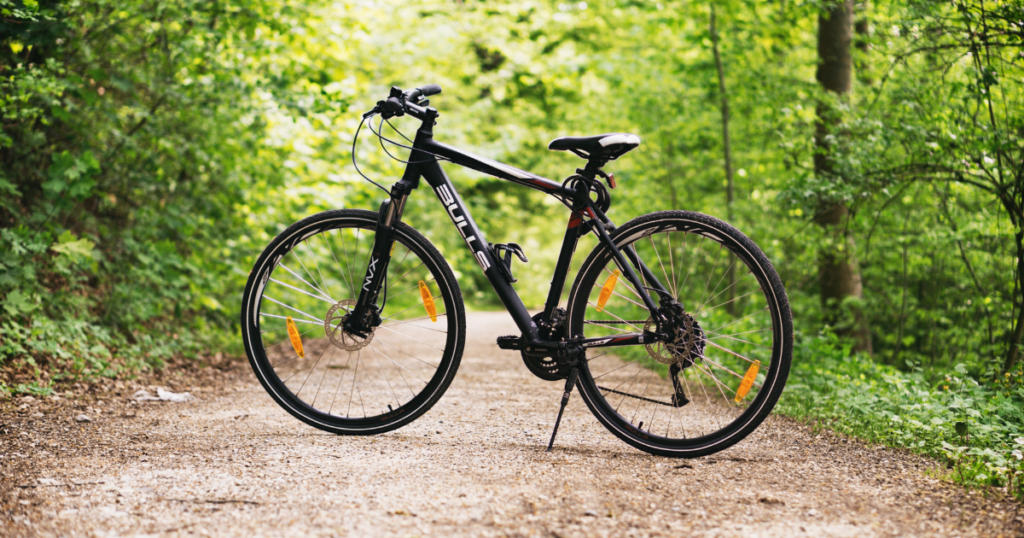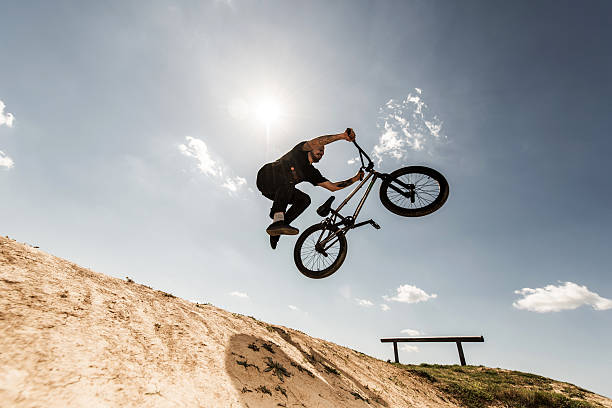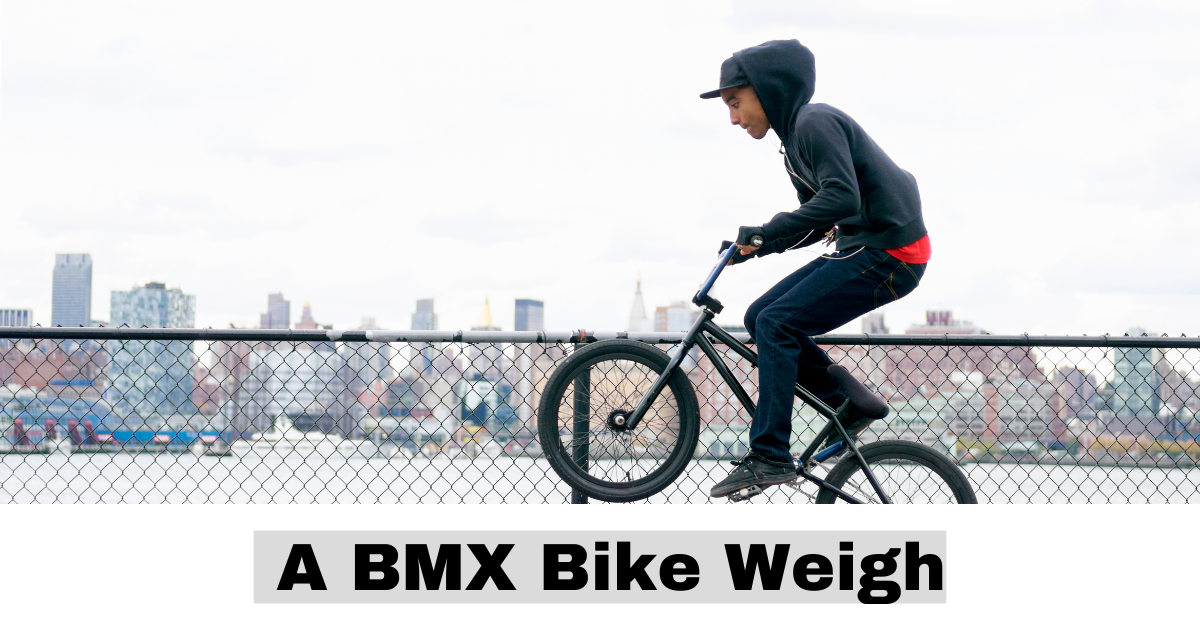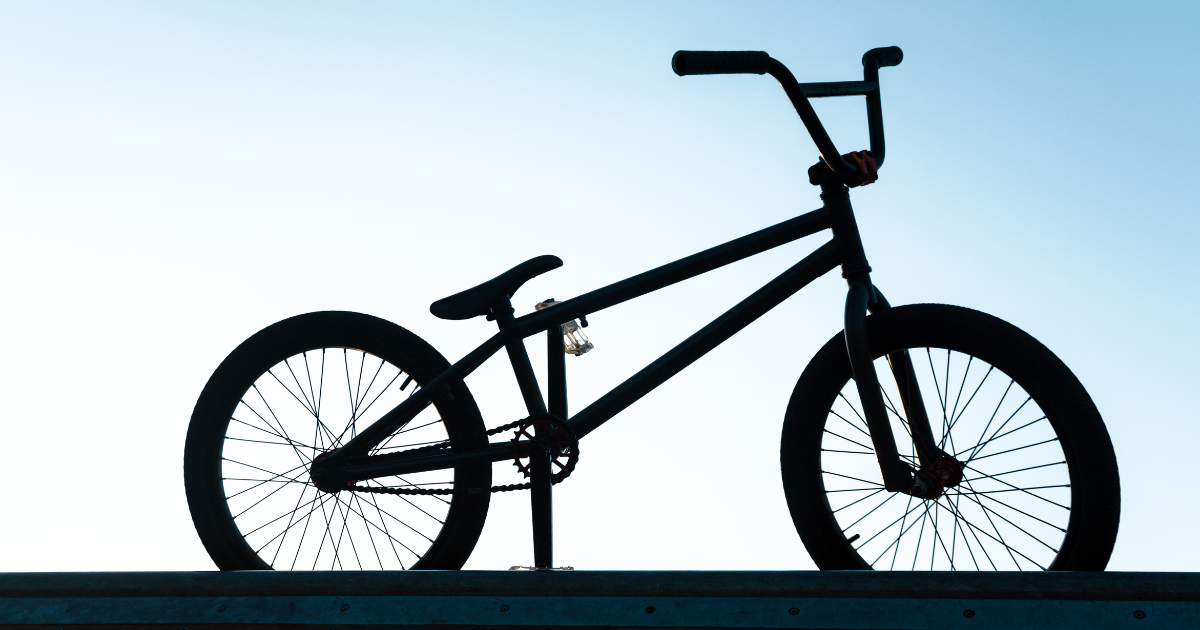Are you a fan of BMX riding, looking to perform impressive tricks on the ramps? Or perhaps you’re simply curious about the world of BMX bikes and wish to gain more knowledge. Either way, one common question arises: how much does a BMX bike weigh? Well, fear not! You’ve come to the perfect place. In this blog post, we will delve into the realm of BMX bike weights, discussing everything from average weights to options for personalized builds. So grab your helmet and join me as we explore this weighty topic together!
The average BMX bike weighs
In the world of BMX bikes, weight is a crucial factor that directly impacts performance and maneuverability. On average, a standard BMX bike weighs around 20 to 30 pounds (9 to 14 kilograms). It’s important to note that this weight range can vary based on the specific components and materials used in constructing the bike.
BMX bikes are specifically built to be strong and long-lasting, which means they often have heavier frames and components compared to other types of bicycles. This added weight is necessary to endure the intense jumps, tricks, and stunts that BMX riders execute.
Custom-built BMX bikes offer riders the opportunity to tailor their bike’s weight according to their preferences. By carefully selecting lightweight materials for each component, such as carbon fiber frames or titanium axles, riders can create a lighter setup.
When it comes to the ideal weight of a BMX bike, there are several factors to consider. These include rider preference and riding style. Some riders might prefer a slightly heavier bike for added stability during landings, while others may prioritize speed and agility by opting for a lighter build.
Mongoose is a renowned brand recognized for manufacturing high-quality BMX bikes. The weight of Mongoose BMX bikes varies based on the specific model and its intended purpose. On average, these bikes weigh approximately 25 pounds (11 kilograms), but it’s important to note that this can differ from one model to another.

Several factors contribute to the overall weight of a BMX bike:
Frame Material:
Different frame materials like steel or aluminum affect the overall weight.
2. Components:
The overall weight of a bicycle can be influenced by heavier or more durable components, such as forks, handlebars, pedals, and cranks
3. Wheels:
Lighter rims reduce rotational mass.
4. Tires:
Wider tires tend to be heavier than narrower ones.
5. Brakes:
Certain brake setups add extra grams compared to others
Professional BMX bikes are designed with high-performance components that prioritize reducing unnecessary weight without compromising strength or durability needed for extreme riding conditions.
How Much Does Custom-Bought BMX Bike Weigh?
Riders who want a bike that matches their individual style and preferences often opt for custom-built BMX bikes. However, when it comes to the weight of these bikes, there isn’t a standard answer that applies to everyone. The weight can vary depending on the specific components chosen and the rider’s unique requirements.
The weight of a custom-built BMX bike is influenced by various factors, with one of them being the choice of frame material. Different materials, like steel, aluminum, and carbon fiber, have different weights and strengths. Aluminum frames typically offer a lighter option but may not be as durable as steel frames.
The components you choose for your custom-built BMX bike can greatly impact its overall weight. Opting for lightweight options when it comes to handlebars, forks, cranks, pedals, and wheels can help reduce the overall weight without sacrificing performance.
Moreover, adding customization options such as paint jobs or graphics to a bike can increase its overall weight. Although these aesthetic choices do not directly impact performance, they do contribute to the overall weight of the bike.
Whether you’re building a custom BMX bike from the ground up or making modifications to an existing one using aftermarket parts, every choice you make will have an impact on its final weight. Riders who are thinking about customization options need to find a balance between reducing weight and ensuring durability that matches their specific riding requirements.

What Is The Ideal Weight Of A BMX Bike?
Weight is a critical factor in the performance of BMX bikes. The ideal weight can vary depending on factors like personal preference and riding style. However, most riders agree that lighter bikes generally offer better performance.
Riding a lightweight BMX bike provides riders with enhanced maneuverability and agility. This makes executing tricks and jumps easier and more fluid. Additionally, a lighter bike allows for faster acceleration and better overall control while in motion.
Most high-quality BMX bikes typically weigh between 20-25 pounds (9-11 kilograms). This weight range strikes a perfect balance between strength and lightness, ensuring durability while still enabling agile handling.
However, certain riders may opt for slightly heavier bikes to gain more stability or strength in specific maneuvers. The choice of an ideal weight ultimately depends on personal preference and riding style.
Keep in mind that the weight of custom-built BMX bikes can differ significantly based on the components chosen by the rider. If you select lighter parts like carbon fiber or titanium alloy frames and lightweight wheels, you can achieve a lower overall bike weight.
However, it’s important to note that focusing solely on achieving the lightest bike possible isn’t the only factor to consider. Finding a balance between weight reduction and maintaining structural integrity is crucial. It’s also necessary to prioritize features like sturdy frames and reliable braking systems to ensure safety and functionality.
In conclusion, determining the “perfect” weight for every rider may not have a clear-cut answer. However, many would argue that a BMX bike that is both lightweight and resilient is desirable. Discovering your ideal setup involves considering your personal preferences in terms of maneuverability versus stability and selecting components that strike the delicate balance between strength and lightness.
How Much Does a Mongoose Bmx Bike Weigh?
Mongoose is a renowned brand in the BMX industry, and riders often wonder about the weight of their bikes. The weight of Mongoose BMX bikes can differ based on the particular model and components used.
A typical Mongoose BMX bike weighs approximately between 25 to 30 pounds (11-14 kilograms). It’s worth mentioning that this is just an estimate, as different models might have slight variations in weight. However, it’s important to understand that a lighter weight generally indicates the use of superior materials and craftsmanship.
The weight of a Mongoose BMX bike can be influenced by several factors such as frame material, wheel size, components (forks, handlebars), and additional features like pegs or brakes. Generally speaking, entry-level models tend to be heavier due to more affordable materials being used.
If you want a lighter Mongoose BMX bike, you can explore their top-end models or customize your ride with lightweight components. It’s important to remember that decreasing weight may have drawbacks, including higher costs and potentially compromising durability.
Keep in mind that while a lightweight bike can provide advantages in terms of speed and maneuverability, it’s important to remember that skill and technique are what will truly set you apart on the track or at the skate park. So, make your choice wisely by considering your riding style and personal preferences!
Factors that affect BMX bike weight
The weight of a BMX bike can be influenced by various factors. One of the significant determinants is the material used in its construction. BMX bikes are commonly made from either steel or aluminum, each material having its own benefits and drawbacks.
Steel frames, while heavier than aluminum frames, offer exceptional durability and strength. This makes them a great choice for riders who value toughness over lightweight design. On the other hand, aluminum frames are significantly lighter, allowing for increased maneuverability and speed. However, they may not handle heavy impacts as well as steel frames. Note: In this revision, I made the language more concise and removed repetitive phrases without sacrificing clarity.
Factors such as wheels, tires, handlebars, and fork materials also impact the weight of a BMX bike. Opting for lighter rims and tires can decrease rotational mass and enhance acceleration and maneuverability during tricks. Furthermore, forks made from carbon fiber or high-quality alloys offer stiffness while reducing weight in comparison to standard steel forks.
When it comes to BMX bike weight, personal preferences also play a role. Some riders prioritize performance and may choose lighter components even if it means sacrificing durability. On the other hand, some riders value strength over minor gains in speed.
When it comes to the weight of a BMX bike, there are several factors that can come into play. These include the material used for the frame, the components chosen, and even the personal preferences
To make informed decisions about the balance between lightweight design and necessary durability for their specific riding style, riders need to understand these factors.
Armed with this information, individuals can make more informed choices when selecting a BMX bike that meets their specific needs. This allows them to prioritize safety and overall performance across different terrains without any compromises.
Whether you’re an experienced professional rider aiming to lighten your current gear or a beginner entering the world of BMX biking, it is crucial to carefully consider these factors before making your next bike investment.
Bmx Weight Kg
When it comes to BMX bikes, weight is an important factor to consider. The weight of a BMX bike can vary depending on several factors. One common way to measure the weight of a BMX bike is in kilograms (kg).
On average, BMX bikes usually weigh between 9 and 13 kg. However, it’s worth noting that individual bikes may vary in weight, either being lighter or heavier than this range depending on factors like the frame material, components used, and additional accessories attached to the bike.
When looking at custom-built BMX bikes, the weight can vary even more. Custom-built bikes give riders the flexibility to choose specific components that meet their needs and preferences. This means that the overall weight of a custom-built BMX bike will depend on the choices made during its construction.
Determining the perfect weight for your BMX bike primarily relies on your riding style and personal choices. Some riders opt for a lighter bike to enhance maneuverability and facilitate tricks, while others prioritize durability over weight.
Mongoose is a well-known brand renowned for manufacturing high-quality BMX bikes. The weight of Mongoose BMX bikes may vary depending on the specific model and rider-selected specifications.
1) Frame Material:
Different materials like steel, aluminum, or carbon fiber have varying weights.
2) Components:
Heavier or higher-end components may add extra grams.
3) Wheels:
Wheel size and rim material contribute significantly to overall bike weight.
4) Accessories:
Additional accessories like pegs or brakes can increase total bike mass.
Professional riders typically choose lightweight setups that weigh between 8-10 kg. This is because they need maximum maneuverability during competitions.
The weight of a standard 20-inch wheel size BMX bike typically ranges from 9 to 12 kilograms. However, if customized with specific parts preferred by each rider, it could be heavier.
Weight of a Pro BMX Bike
In the world of professional BMX biking, every gram is crucial. These high-performance bikes are meticulously designed to be lightweight without compromising their strength and durability. A professional BMX bike typically weighs between 18-25 pounds (8-11 kilograms), varying based on the specific components chosen by the rider and their personal preferences.
To achieve such incredibly light weights, manufacturers utilize materials such as carbon fiber, titanium, and aluminum in both the frames and components of these bikes. These specific materials possess exceptional strength-to-weight ratios, which enables riders to effortlessly execute tricks while maintaining full control over their bicycles.
Professional BMX riders often prefer using lightweight rims and tires. This helps reduce the rotational weight, resulting in improved maneuverability while performing tricks mid-air. Additionally, they might opt for smaller frame sizes to further decrease the overall weight of their bikes.
It’s important to keep in mind that while lighter bikes offer advantages in terms of aerial maneuvers and quick acceleration, they might not be as durable or suitable for rough terrains or heavy impacts. Professional riders carefully balance weight savings with performance capabilities when choosing their bikes.
Keep in mind that these ultra-lightweight setups are not essential for beginners or casual riders who prioritize stability over agility. The choice ultimately comes down to personal preference and riding style!
How heavy is a 20 Inch BMX Bike?
If you’re wondering about the weight of a 20-inch BMX bike, it’s important to note that there are several factors that can influence its weight.
The weight of a bike is largely influenced by the materials used in its construction. To reduce overall weight, lightweight materials like aluminum or carbon fiber are often preferred. In contrast, bikes made from steel tend to be heavier.
Components and accessories attached to the bike also contribute to its weight. A stock 20 inch BMX bike may weigh anywhere between 25-30 pounds (11-14 kilograms). However, if you opt for aftermarket parts or custom modifications like lighter tires or handlebars, you can potentially reduce its weight even further.
The desired weight of a 20 inch BMX bike can also vary depending on the type of riding style or discipline. For instance, riders who specialize in racing events generally prefer lighter bikes to enhance speed and maneuverability. On the other hand, street riders often prioritize durability over reducing weight.

It’s worth noting that while a lightweight BMX bike offers advantages in certain situations like racing competitions or tricks that require agility, it may not be necessary for every rider. It’s important to find the right balance between strength and weight based on your specific needs and preferences.
When deciding on the weight of a 20-inch BMX bike, it’s important to consider that there isn’t an exact answer. The ideal weight can vary based on individual factors like riding style and personal preference. It’s crucial to select a bike that matches your intended use and offers optimal performance without sacrificing durability. So whether you’re hitting ramps at skate parks or tearing up dirt trails with friends, prioritize safety while enjoying the ride!
Importance of Bike’s Weight in BMX Racing
When it comes to BMX racing, every ounce matters. The weight of your bike can have a significant impact on your performance on the track. A lighter bike allows for quicker acceleration and more maneuverability, giving riders an edge over their competitors.
In BMX racing, where seconds can make all the difference between winning and losing, having a lightweight bike is crucial. A lighter bike means less effort is required to pedal and maintain speed, allowing riders to conserve energy for bursts of power when needed.
A lighter bike not only improves acceleration and agility but also enhances control and handling. With less weight to manage, riders can navigate tight turns effortlessly and maintain stability during jumps and landings.
However, it’s crucial to strike a balance between reducing weight and maintaining the bike’s structural integrity. Cutting excessive weight may compromise the bike’s durability, increasing the risk of breakages or failures during races.
When it comes to BMX racing, riders often choose top-notch materials like carbon fiber or titanium frames. These lightweight options provide strength without sacrificing agility on the track. In addition to the frame, components such as wheels, handlebars, and cranks are carefully selected for their weight-saving properties while still ensuring safety standards are met.
To stay competitive in BMX racing circles today requires meticulous attention not just to rider skills but also equipment optimization. Therefore choosing a lightweight yet sturdy BMX bike becomes vital for those aiming to excel on the racecourse!
Different Types of BMX Bikes and Their Weight Variations
In the market, you’ll find various types of BMX bikes designed for specific purposes and riding styles. These bikes can vary significantly in weight.
Introducing freestyle BMX bikes. These bikes are specially designed with sturdy frames to endure the intense tricks and stunts performed by riders in skate parks or on street obstacles. Typically, freestyle BMX bikes weigh between 25 to 30 pounds.
In contrast, racing BMX bikes are specifically crafted for maximum speed and agility on dirt tracks or racecourses. These bikes are typically lighter than freestyle models, weighing approximately 20 to 25 pounds. The reduced weight enables racers to reach higher speeds and navigate tight turns with greater efficiency.
There is another type of BMX bike called the park/street BMX bike. This particular type combines features from both racing and freestyle models. These bikes typically have lightweight frames similar to those used in racing, but they also have stronger components that are suitable for performing tricks at skate parks or on urban streets.
You can find dirt jump BMX bikes that are designed specifically for off-road jumps and trails. These bikes are slightly heavier than other types because they have reinforced construction to handle rough landings.
When selecting a BMX bike, it’s crucial to take into account your preferred riding style. Each type of bike has its unique features and weight that cater to specific purposes.
Lightweight vs. Heavy BMX bike:
When it comes to choosing a BMX bike, one of the factors that riders consider is its weight. The weight of a BMX bike can significantly impact its performance and handling on the track or in the skate park. Let’s take a closer look at the differences between lightweight and heavy BMX bikes.
There are numerous advantages to riding a lightweight BMX bike. With its lighter frame, you’ll experience enhanced maneuverability and control when navigating tight turns or executing tricks. The reduced weight allows riders to effortlessly lift their bikes for jumps, spins, and other aerial stunts. Furthermore, the lighter bike puts less strain on your body during extended sessions or competitions.
On the other hand, there are benefits to riding heavy BMX bikes. The added weight actually provides stability when riding at high speeds or landing jumps with force. These bikes are often preferred by riders who prioritize durability over agility.
The decision between a lightweight or heavy BMX bike ultimately comes down to personal preference and riding style. Some riders may choose lighter options for increased speed and easier execution of tricks, while others may prefer the durability of heavier models.
When selecting the right type of equipment for your athletic endeavors, it’s crucial to find a balance that suits your individual needs. Consider both weight and performance factors in order to make an informed decision.
How To Make A BMX Bike Lighter?
The weight of a BMX bike is essential for optimal performance. A lighter bike offers improved maneuverability and speed. If you’re interested in reducing the weight of your BMX bike, here are some helpful tips.
If you’re looking to enhance your bike, consider upgrading its components. Opt for lightweight options such as titanium or carbon fiber materials for the frame, forks, handlebars, and seat post. These choices can effectively reduce weight without compromising durability.
Now let’s inspect your wheels and tires. Opt for rims that are lightweight yet sturdy, ensuring both strength and stability. Furthermore, consider selecting tires with slimmer sidewalls as they typically offer a lighter overall weight.
You can also reduce weight by replacing steel bolts with titanium ones. While this change may seem minor, every gram matters in the world of BMX racing.
Assess any additional accessories or extras that may be contributing unnecessary weight. Remove anything that does not have a practical purpose during your rides or races.
To transform your BMX bike setup into a lean and highly efficient machine for track action, follow these strategies and choose lightweight components carefully.
Read more: How To Make A BMX Bike Lighter?

How to Reduce Your BMX Bike’s Weight?
If you want to improve your performance and have a better riding experience on your BMX bike, consider reducing its weight. This applies to both professional riders and those who simply enjoy cruising around the skate park. A lighter bike can make executing tricks easier and enhance maneuverability.
If you want to make your BMX bike lighter, you can consider upgrading some of its components. Begin with the frame and search for lightweight materials like aluminum or carbon fiber. These materials provide strength without adding extra weight.
To make your bike lighter, you can start by replacing heavy steel parts with lighter alternatives. For instance, swapping out steel handlebars for aluminum ones and choosing titanium axles instead of traditional steel ones. These small changes can have a significant effect on the overall weight of your bike.
You should also assess your wheelset and tires. Opt for lightweight rims made from materials such as carbon fiber or magnesium, which can reduce weight. Additionally, consider using narrower tires specifically designed for BMX racing. These tend to be lighter than wider tires used for freestyle riding.
It’s also important to emphasize the significance of proper maintenance. By regularly cleaning and lubricating your chain, you not only extend its lifespan but also reduce friction. This leads to smoother and more efficient pedaling.
When trying to lighten the weight of your BMX bike, it’s important to consider every gram. Avoid adding any unnecessary accessories or additional components that could add unnecessary heaviness to your ride.
By taking these steps to reduce weight, you’ll find yourself flying higher, going faster, and pushing the limits of what you thought was possible on a BMX bike! So go ahead and start shedding those ounces – it’s time to take your riding game to new heights!
How to pick the right BMX bike for you?
Choosing the perfect BMX bike involves considering several important factors. The first thing to account for is your skill level and riding style. Are you new to BMX biking or an experienced rider looking to enhance your abilities? This distinction will guide you in selecting the most suitable type of BMX bike for your needs.
Now, let’s talk about the size of the bike frame. BMX bikes generally come in various sizes that are based on your height and build. It is crucial to select a bike with a frame that fits you correctly as it will greatly impact both your comfort and control while riding. ### [AI generated text]: Cooking can be an enjoyable activity for people of all ages. Whether you’re
It’s also important to consider the type of riding you plan on doing. Do you prefer street riding, park riding, or dirt jumping? Each discipline has its own specific bike design, so it’s essential to choose a BMX bike that suits your preferred style.
Also, make sure to consider the vital components of the bike, such as brakes, tires, and gearing. These elements can have a significant influence on both performance and durability.
Lastly, keep in mind your budget when choosing a BMX bike. It’s important to consider how much you are willing to spend before making your final decision.
By taking these factors into careful consideration, you can make sure to choose the BMX bike that perfectly suits your needs. So, go ahead, conduct some research, test out different bikes, and discover that ideal ride for yourself.
Conclusion
The weight of a BMX bike can differ based on factors like its type, components, and customization. Generally, a standard BMX bike weighs between 20 to 30 pounds. However, custom-built bikes can be lighter or heavier depending on personal preferences.
In competitive racing, having a lightweight BMX bike has clear advantages as it enhances maneuverability and speed. However, for recreational riders, factors like durability and stability may take precedence over weight.
BMX bikes come in different types, and their weight can also vary accordingly. For instance, race bikes are typically lighter than freestyle or street bikes that are specifically designed for performing tricks and stunts.
If you want to lighten your BMX bike, there are a few approaches you can take. One option is to upgrade specific components like the frame or wheelset with lighter alternatives. Another way is to remove any unnecessary accessories or parts that aren’t essential for your riding style in order to reduce weight.
When selecting a BMX bike that suits your needs, it’s important to take into account factors such as your skill level, riding style, and personal preferences regarding weight. If possible, try out different models through test rides to gauge their weight and handling.
It is important to keep in mind that while a lighter bike may offer certain advantages, prioritizing safety and durability should always be the top concern. Striking a balance between performance and comfort will guarantee a pleasant riding experience during your BMX adventures.
Whether you’re riding at the local park’s dirt jumps or performing tricks and flips on the streets, knowing the weight of a BMX bike is important for making informed decisions about your ride.






5 thoughts on “How Much Does A BMX Bike Weigh?”